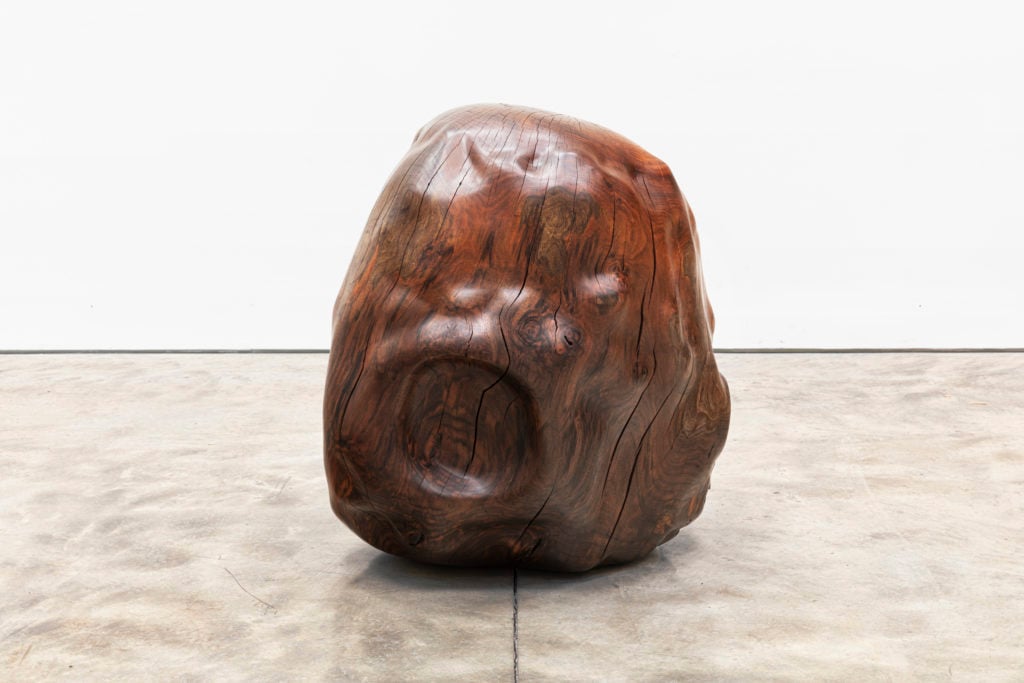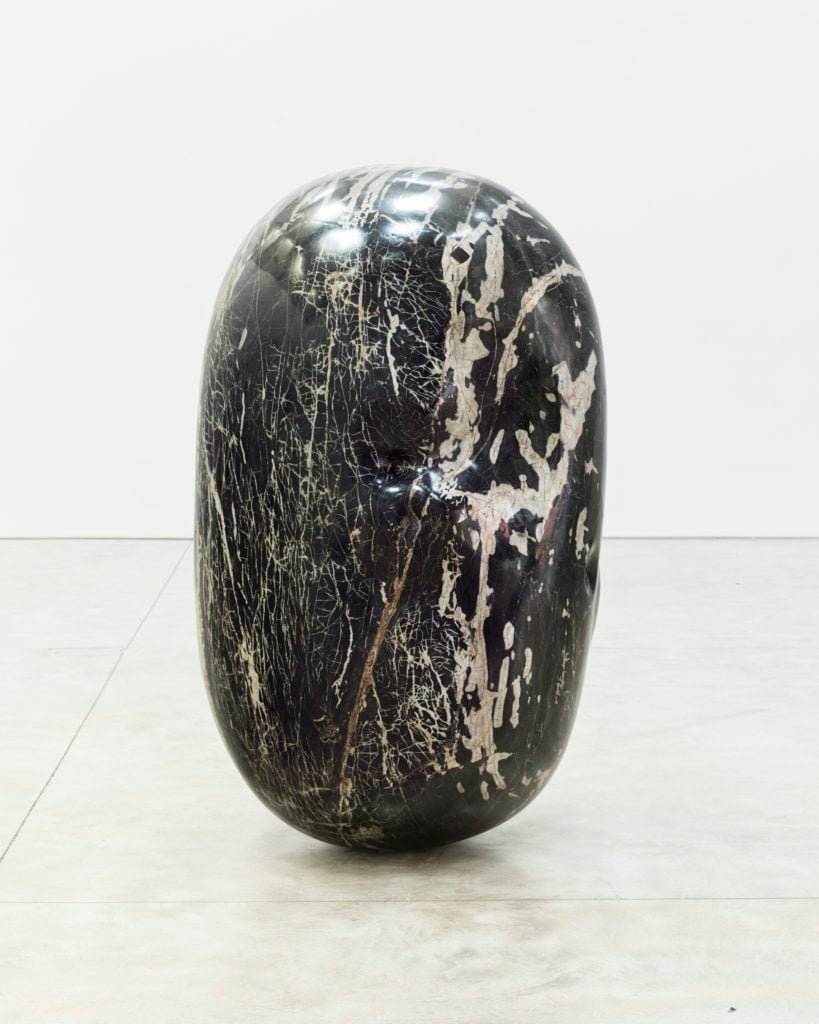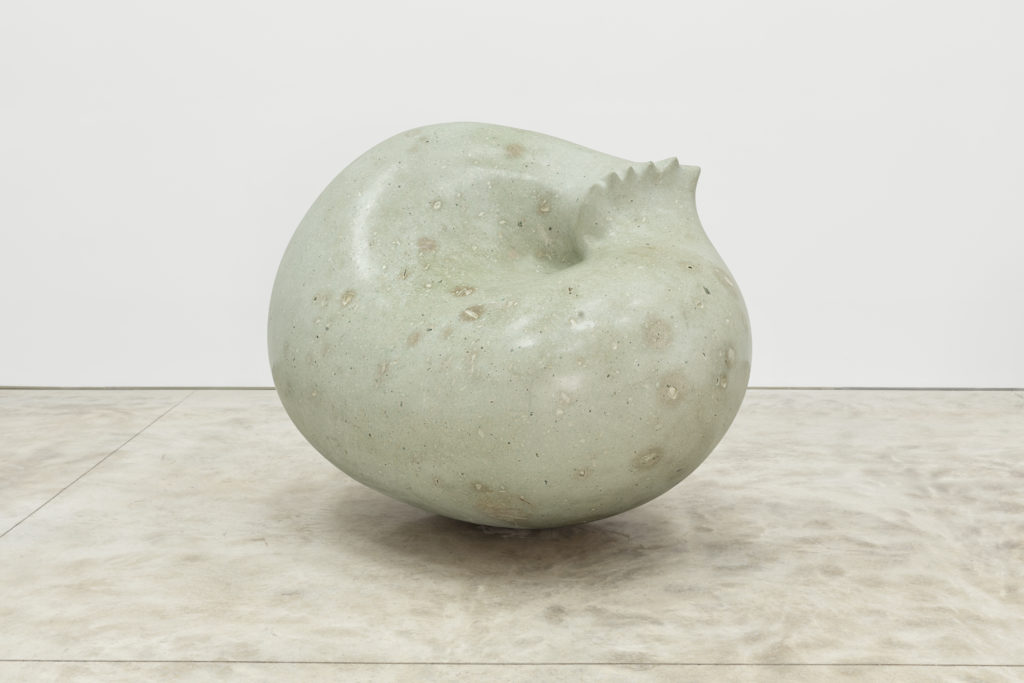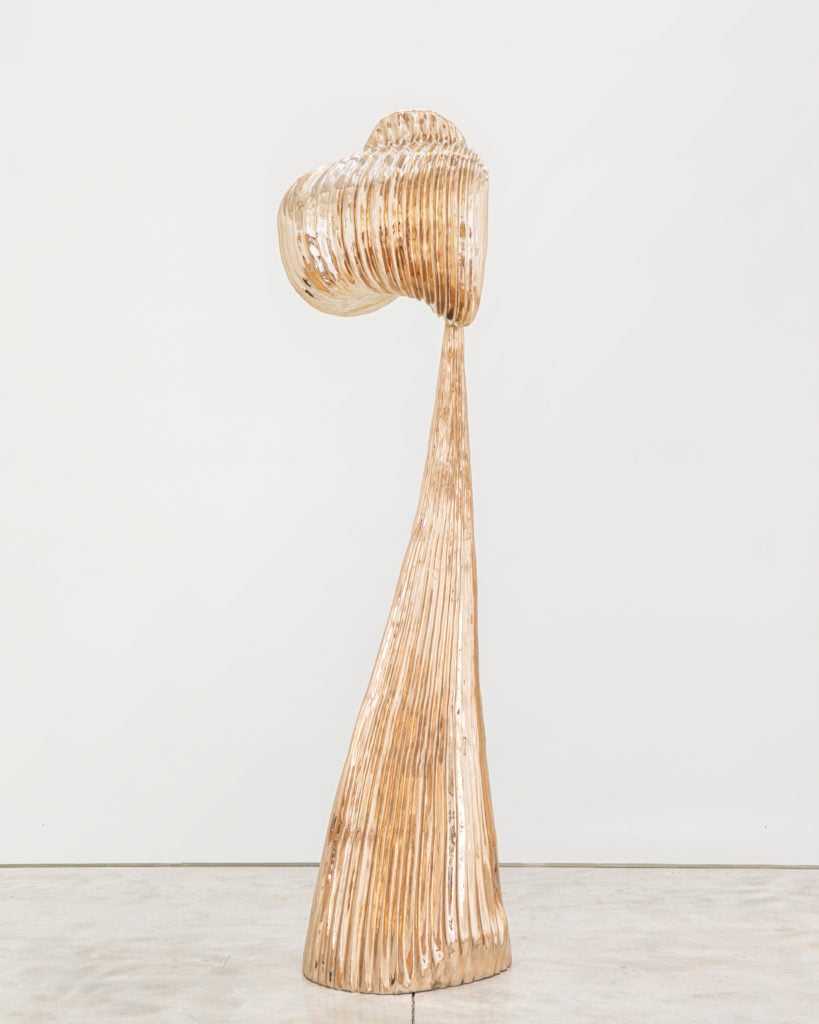The sculptor Alma Allen likes to say that he’s been doing the same thing since he was 10 years old.
Having started making sculptures when he “could first hold a knife or a screwdriver,” he says—only half-joking—that his “impulses haven’t changed very much. I haven’t really matured much as a person.”
Pressed to elaborate, the artist, who now has a debut solo show at Kasmin gallery in New York, claims that his work today differs very little in conceit and intention from the tiny whittlings or stacks of stones he used to fashion as a kid wandering the Utah desert.
“I like to capture things in between, that are still progressing beyond the moment I make them,” Allen tells Artnet News. “I’m interested in that split second. The sculptures are often in the act of doing something: They are going away, or leaving, or interacting with something invisible. Even though they seem static as objects, they are not static in my mind. In my mind they are part of a much larger universe. They are interacting with each other as well, with works I made 20 years ago.”

Alma Allen, Not Yet Titled (2020). Courtesy of the artist and Kasmin Gallery. Photo by Diego Flores.
The Desert Beckons
Allen grew up in a landscape dotted with canyons, mines, and petroglyphs, which he describes as “the first things [he] understood as art.” He began creating small objects—carved stones or bits of wood—to leave behind in the hopes of communicating with the indigenous people he imagined might still be lingering nearby.
Raised in a Mormon family without television and with few outside influences, Allen spent a lot of time alone in nature, and it was against that backdrop that he forged an enduring relationship with the types of materials he still uses today: marble, wood burl, stone.
After running away from home before finishing high school, a series of fortuitous encounters led the self-taught Allen, who is 49, from living in squat houses to Joshua Tree to New York City. In 2014, he was selected to participate in the Whitney Biennial, where his installation garnered the attention of critics and collectors alike. The next year, he had a show at Blum & Poe in Los Angeles.
His current exhibition at Kasmin is Allen’s first major solo show in New York, and marks his return to the city where he once struggled to sell his art on the streets of SoHo following a bicycle accident in which he was nearly killed.
“I found it very humiliating to sell on the street,” he says. “I’m an extremely shy person. But I couldn’t figure out how else to get money to eat with. It was desperation.”

Alma Allen, Not Yet Titled (2020). Courtesy of the artist and Kasmin Gallery. Photo by Diego Flores.
In those highly provisional circumstances, Allen met some of his first important contacts: the jeweler Ted Muehling, gallerists Charlie Cowles and Jack Tilton, and designers Issey Miyake and Roman Alonso.
In the early 2000s, after Allen moved to Los Angeles, Alonso, a cofounder and principal at the LA-based design studio Commune, wandered into a small storefront Allen had moved into and quickly recognized the works he had first seen in SoHo decades earlier. Alonso commissioned the young artist to make benches for a restaurant he was designing, and later brought other collectors, including the curator and art advisor Mark Fletcher, to see Allen’s work.
“It all felt very magical and enchanted,” says Fletcher of his first encounter with Allen. “His work captured a distinctly Californian spirit, a Western aesthetic, devoid of irony or cynicism. For me that was very attractive. The work felt genuinely sincere.”
Sales to early supporters helped Allen afford a robot that could execute large-scale pieces based on scans of smaller, hand-modeled maquettes. With this machine, Allen, who had begun to develop muscle loss and bone fractures, could chisel gigantic pieces of Cadiz marble that he rockhounded himself in the desert, or shape several-hundred-pound wood burls without much physical strain, all while retaining a highly autographic vocabulary.

Alma Allen, Not Yet Titled (2020). Courtesy of the artist and Kasmin Gallery. Photo by Diego Flores.
A ‘Shy and Gentle’ Artist
Allen’s isolated childhood is still visibly etched into his manner.
“Alma is a shy and gentle person who works without guile, but when the genius flashes I also see the distance, which is what he is willing to be without in order to make his work,” says his wife, the curator and writer Su Wu. “In other words, I’m married to my favorite artist, which I wouldn’t wish on anyone.”
If it weren’t for the sense of humor that undergirds so much of his work—the way certain protuberances jut out awkwardly, or the resemblance of marble pieces to cartoon skulls—one might feel tempted to liken Allen to his material: a marmoreal temperament, unyielding as rock. “I know no other objects that are as intent on an interior life as Alma’s sculptures,” Wu says.
“His alphabet is fully developed and mature, and he can really communicate with these objects that he’s creating,” says Nick Olney, managing director of Kasmin gallery. “They speak to deep structures that are very human and very much about nature, which I think is why we’re so drawn to them.”
There is indeed a sense that the works are a conduit for some universal, perhaps primordial language; regardless of context, geography, even material, the works prove powerfully transmissive. “They’re like the perfect boyfriend: sensual and funny,” Alonso says with a smile.
When Allen and Wu moved from Joshua Tree to Mexico City just over two years ago, they bought a light-drenched 6,000-square-foot historical landmark building in the Roma Norte neighborhood that, surprisingly, turned out to be the former home of William S. Burroughs. It was the house he was living in when he killed his wife, the poet Jane Vollmer, at a bar around the corner. In homage to Vollmer, Wu planted black-and-white Black-Eyed Susans in the back garden that are now flourishing.

Alma Allen, Not Yet Titled (2020). Courtesy of the artist and Kasmin Gallery. Photo by Diego Flores.
Allen, meanwhile, now has a fully equipped studio an hour south of Tepotzlán, a valley surrounded by a vast escarpment that Wu describes as “a Chinese scroll-painting of cliffs—the whole place is jungly and wild.”
At this studio, just beyond a rim of volcanoes that hug the city’s southern border, Allen has been able to make works from a new set of materials—peach onyx, pale green cantera and obsidian in a range of glinting blacks—that would be difficult to source in the United States. His work, though formally familiar, has begun to take on unexpected color and striation, and assume extreme dimensions.
He now plans to build a house for his family as a refuge from the stimulation and pollution of Mexico City, but he remains fascinated by what a very old place the city is, and how it has been continuously inhabited since Olmec times. It’s “the oldest of anything in the new world, the first civilization,” he says.
And whether by accident or by design, Allen appears to have found his way back to the mysticism and wonder of the petroglyphs of his youth.










